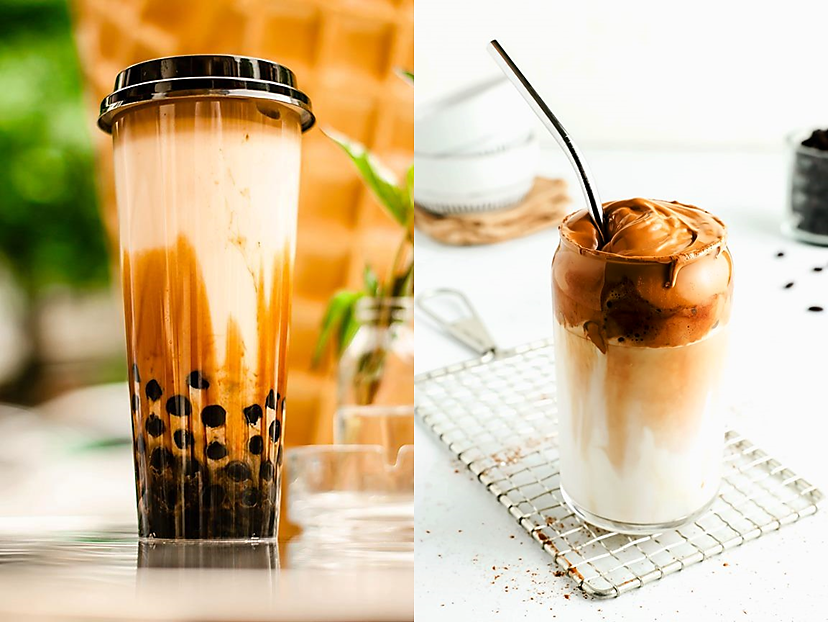Having yet to enter the hallowed halls of one of the biggest name coffee shops on the planet, never mind order a mocha decaf almond milk frappé, it’s safe to assume that this blogger does on occasion miss drinks trends.
Which is why when scouring social media and seeing the word ‘bubble’, I took it as a reference to ‘stay in your bubble’ – a reference to social distancing. Turns out, after some investigation, the references were for Dalgona (whipped) coffee – an alt. version of this bubble drink. I watched with fascination as an Americano was whipped into submission, until it changed properties.
Upon further investigation I discovered that ‘bubble drinks’ have been around for decades and the variations are … um … varied.
Wiki tells us: Bubble tea is a tea-based drink. Originating in Taichung, Taiwan in the early 1980s, it includes chewy tapioca balls or a wide range of other toppings.
First off, there’s Boba (or Bubble) Tea – the bubbles or boba being tapioca balls, almond jelly or grass jelly (an Asian treat similar in texture to Jell-O). There is also ‘Bubble Coffee’, which is coffee mixed with soy and condensed milk, and finished with coffee-soaked tapioca pearls.
Whereas Bubble Tea has been around for decades, Dalgona coffee seems more a product of (ironically) those staying in their home bubble. According to Wiki: A drink made by whipping equal proportions of instant coffee powder, sugar, and hot water until it becomes creamy and then adding it to cold or hot milk. It was popularised on social media during the COVID-19 pandemic, when people refraining from going out started making videos of whipping the coffee at home, by hand without using electrical mixers.
Now we know. Truth to be told, it’s unlikely I’ll ever be putting tapioca in any drink or have the fortitude to hand whip up a batch of Dalgona coffee. I’m perfectly happy relying on our AquAid water cooler dispensing refreshing hot and cold water so I can make a cuppa or a coffee.

